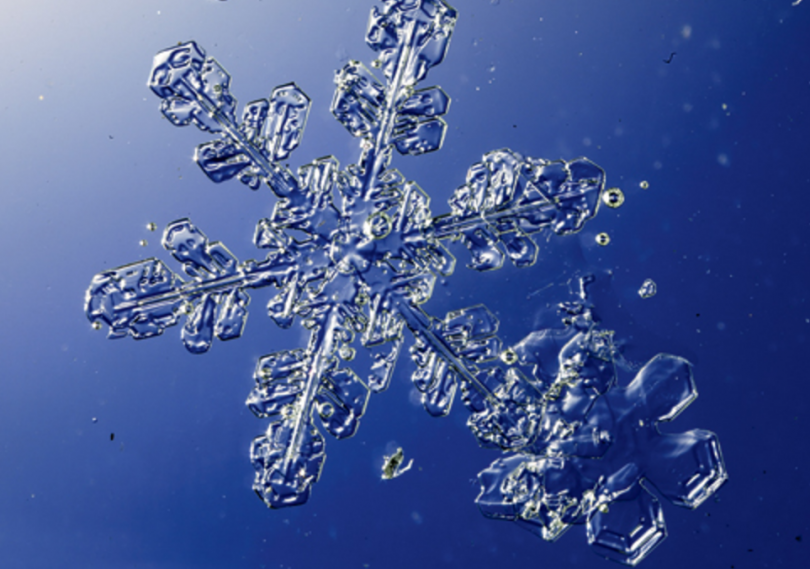aNewDomain — The World War II-era invention of the adhesive material you know as superglue was a big deal for all the obvious reasons. But the small molecules that comprise, called cyanoacrylate monomers, are useful for another, even cooler reason: They’re capable of preserving the form of anything microscopic they touch, provided there is water involved.
In the video below, Bryan Rolfe shows you exactly how to preserve a snowflake with just snow, superglue and some commonly available materials.
Check out Rolfe’s video below, and scroll below the fold to find more about this method …
Essentially, the snowflake preservation method works because, when the glue hardens, the monomers in it link together in long polymer chains, a process that is triggered by any amount of moisture. (Now you know why superglue will harden on your fingers so quickly).
A chemist named Tryggvi Emilsson gets the credit for dreaming up this method of saving snowflakes. Ever fascinated by Wilson Bentley’s’ gorgeous 1931 book, Snow Crystals: A Pictorial Archive, Emilsson was contemplating the book’s s 2,000 plus photos of snowflakes when he suddenly came up with a way to preserve their 3D images. His realization was that superglue, which hardens on contact with water and prone to seeping into the most minuscule indentations and shapes, would be ideal for the job.
See that image of a snowflake above? That’s an image of a 1979 snowflake, as shown in a Popular Science discussion of Emilsson’s method back in 2006. For alternative methods and more discussion on saving snowflakes, check out this awesome Caltech how-to guide.
If you actually want to save a snowflake, though, Rolfe’s video above is awesome. That’s why I selected it for today’s featured video here at aNewDomain. Enjoy.
For aNewDomain, I’m Gina Smith.
Cover image of a 1979 snowflake: by Tryggvi Emilsson, as shown in Popular Science in 2006, All Rights Reserved.













